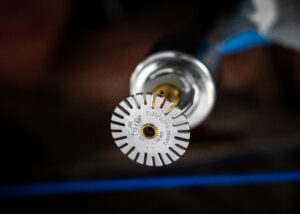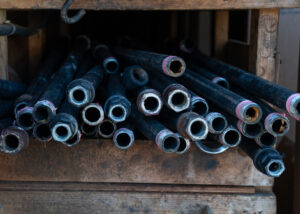Let’s Bust Some Myths!
When it comes to protecting your business from fire, commercial sprinkler systems are a must-have. There are so many myths out there that leave people feeling confused and worried. Let’s cut through the myths and separate fact from fiction. Knowing the truth can help protect your property and everyone in it!
Myth #1: Sprinklers Are Triggered by Smoke
Fact: Nope! Sprinkler heads actually react to heat, not smoke. Each head has either a glass bulb filled with heat-sensitive liquid or a metal link that melts. When the temperature around the sprinkler hits around 135°F to 165°F, the bulb bursts or the link melts, and water starts flowing. What Triggers Fire Sprinklers and Can They Go Off Accidentally?
Myth #2: All Sprinklers Go Off at Once
Fact: Contrary to dramatic movie depictions, only the sprinkler heads near the fire activate. Sprinkler heads operate independently; each head opens only if the temperature around it reaches its rated threshold. This design minimizes water damage and ensures rapid, targeted suppression, limiting disruption to unaffected parts of the building.
Myth #3: Pulling a Fire Alarm Activates Sprinklers
Fact: Fire alarms and sprinkler systems are separate safety tools. Pulling a fire alarm will alert everyone and get emergency help on the way, but it won’t trigger the sprinklers. Only the heat detected by individual sprinkler heads can activate them. This way, water only comes out when there’s a fire to put out.
Myth #4: Sprinklers Are Easily Set Off Accidentally
Fact: Sprinkler heads are built tough! It takes a hard hit to set them off. While rare accidental activations can occur if a head is severely damaged, everyday bumps and the hustle and bustle of daily life aren’t likely to cause issues.
Myth #5: Sprinklers Cause More Damage Than Fire
Fact: On the contrary! The water from a single activated sprinkler head is a drop in the bucket compared to what an unchecked fire can do. Usually, only one or two heads go off during a fire, delivering just the right amount of water to contain or even put out the flames, cutting down on both fire spread and water damage.
So, How Sprinkler Systems Actually Work?
It’s all about the pipes and heads! Sprinkler systems are networks that connect to a water source. When a fire heats the air near the ceiling, just the heads that sense that heat activate, releasing water over the flames. There are two ways this happens: glass bulbs burst when heated, or fusible links melt. Commercial systems can be either “wet pipe” (always full of water) or “dry pipe” (water is held back until it’s needed). They can be customized with special heads and extended coverage based on your building’s unique layout and fire risks. Plus, when sprinklers activate, alarms go off to alert everyone and emergency responders right away! Understanding the Mechanics of Extended Coverage Sprinklers in Commercial Buildings – Fire Systems, Inc.
Why Are Inspections Important?
Understanding how these systems work helps correct those common myths and boosts overall fire safety awareness. Sprinklers automatically respond to fires, minimizing risk and protecting lives and property every day. To keep everything running smoothly, regular maintenance and professional inspections are key. So, make sure to consult qualified fire protection experts to keep your building safe and secure!




